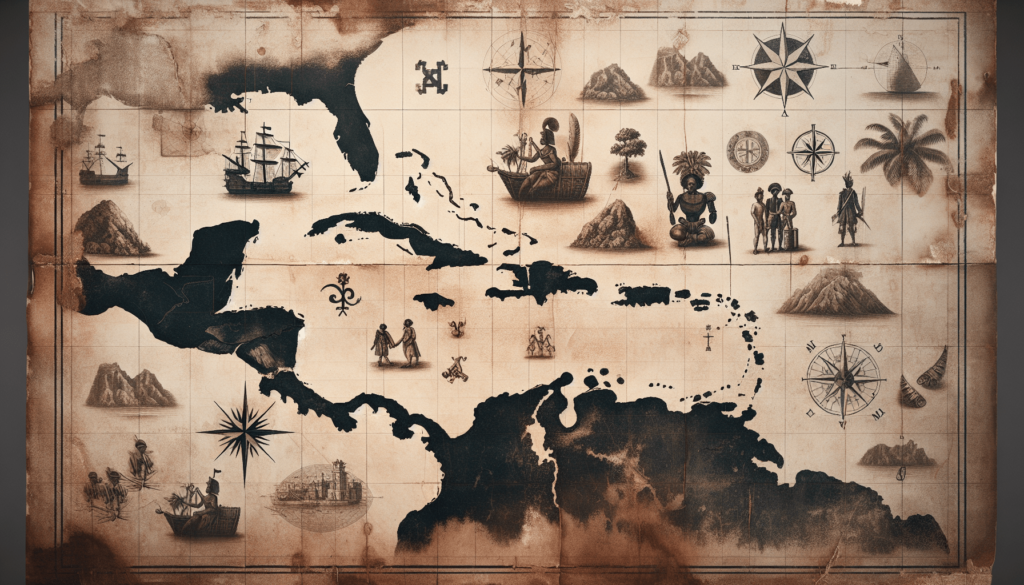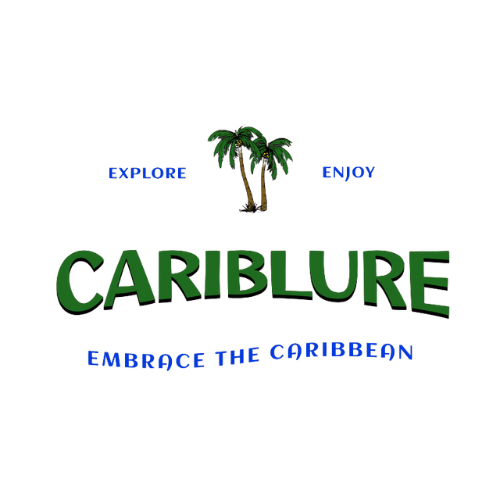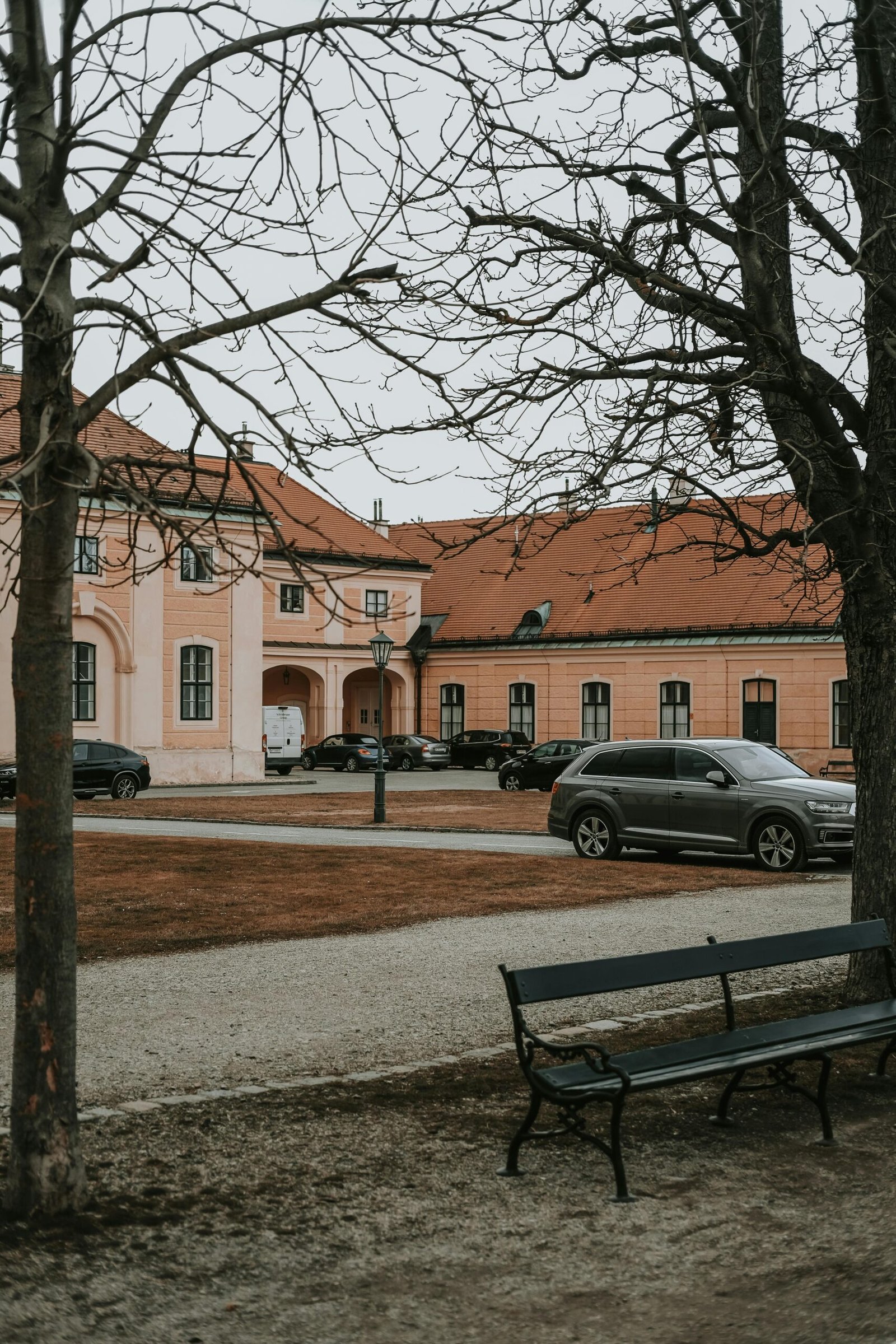Get ready to embark on a journey through the vibrant and rich tapestry of Caribbean history! From the stunning landscapes of the Caribbean islands to the fascinating historical events that have shaped this region, you’ll discover a captivating overview of the Caribbean’s past. From the influences of indigenous cultures to the legacies of colonialism, this article will provide you with a fascinating glimpse into the history that has shaped the Caribbean into the vibrant and unique place it is today. So, grab a seat and prepare to be transported back in time as we explore the intriguing and diverse chapters of Caribbean history.
Pre-Columbian era
The history of the Caribbean region dates back to the Pre-Columbian era when the first indigenous inhabitants settled in these beautiful islands. These original inhabitants were skilled farmers, hunters, and gatherers, who established thriving communities in the region. Among them were the Tainos, the Arawaks, and the Caribs.
The first indigenous inhabitants
The first indigenous inhabitants of the Caribbean were the Tainos, who inhabited the Greater Antilles and the Bahamas. They were skilled farmers who cultivated crops such as maize, cassava, and beans. They also had a complex social structure and a rich cultural heritage. Their craftsmanship was evident in their pottery and stone tools, which are still found scattered across the islands today.
The Tainos
The Tainos were known for their peaceful nature and their ability to coexist harmoniously with nature. They had an organized political structure with a chief, or Cacique, ruling each community. The Taino society was matrilineal, with kinship and inheritance passed through the mother’s line. They also had a deep spiritual connection with nature and worshipped many deities, including the creator god, Yocahu.
The Arawaks
The Arawaks, who inhabited the Lesser Antilles, were closely related to the Tainos and shared many cultural characteristics. Like the Tainos, they were skilled agriculturists and had a strong sense of community. They lived in villages governed by a chief and had a rich oral tradition, passed down through storytelling and songs. The Arawaks also created intricate pottery and crafted tools and ornaments from shells and stone.
The Caribs
The Caribs, on the other hand, were a more aggressive and warlike group. They originated from South America and migrated north, gradually displacing the Arawaks from the islands of the Eastern Caribbean. The Caribs were skilled seafarers and expert navigators. They built sturdy canoes and engaged in trade and warfare with neighboring tribes. Despite their fierce reputation, the Caribs also had a rich cultural heritage, with a unique language and distinct religious practices.
European colonization
The arrival of European explorers in the late 15th century marked a new era in Caribbean history. The most significant of these voyages was Christopher Columbus’ expedition in 1492, which led to the widespread colonization of the region by European powers.
Spanish conquest
The Spanish were the first Europeans to establish a presence in the Caribbean. Shortly after Columbus’ expedition, they embarked on a series of conquests, ruthlessly subjugating the indigenous populations and establishing colonies. The Spanish brought with them diseases, such as smallpox, which decimated the indigenous communities. They also exploited the Caribbean’s natural resources, such as gold and silver, sending vast quantities back to Spain.
The Columbian Exchange
The arrival of Europeans in the Caribbean also led to the Columbian Exchange, a profound exchange of plants, animals, diseases, and culture between the Old World and the New World. The introduction of new crops, such as sugar cane and bananas, transformed the Caribbean’s agricultural landscape. The importation of African slaves also had a lasting impact on the region’s demographics and cultures.
British, French, and Dutch colonization
As the Spanish empire began to decline, other European powers, such as the British, the French, and the Dutch, sought to establish their own colonies in the Caribbean. These European powers battled for control of valuable resources, such as sugar plantations, which became the backbone of the region’s economy. The British, in particular, emerged as dominant colonial powers in the Caribbean, with colonies in Jamaica, Barbados, and Trinidad and Tobago.
Plantations and slavery
The establishment of sugar plantations in the Caribbean fueled the demand for labor, leading to the rise of the Atlantic slave trade. African slaves were forcibly transported to the Caribbean to work on these sugar plantations under brutal and inhumane conditions. The institution of slavery had a profound and lasting impact on Caribbean societies, shaping social hierarchies, cultural practices, and even the region’s demographics.

Pirate activity
The Caribbean earned a reputation as a haven for pirates during the Golden Age of Piracy in the 17th and 18th centuries. These pirates, often operating with the tacit support of European powers, preyed on ships and coastal settlements, amassing great wealth and challenging the established order.
The Golden Age of Piracy
The Golden Age of Piracy in the Caribbean began in the late 17th century and lasted until the early 18th century. During this time, infamous pirates like Blackbeard, Anne Bonny, and Calico Jack terrorized the seas, looting and pillaging merchant vessels. The pirates established bases in remote islands and used their knowledge of the region’s geography to evade capture by European naval forces.
Famous pirates
The Caribbean was home to many infamous pirates who became legends in their own right. Blackbeard, or Edward Teach, was one of the most feared pirates of his time, often adorned with smoldering fuses in his beard to intimidate his enemies. Anne Bonny and Mary Read were two female pirates who defied gender norms and became fearsome fighters and leaders. These pirates and many others left behind a colorful legacy that continues to captivate popular imagination.
Impact on Caribbean economy
The presence of pirates in the Caribbean had a significant impact on the region’s economy. While their activities created an atmosphere of lawlessness and fear, their looting brought wealth into the region. Pirate crews spent their plundered riches within local communities, stimulating economic activity in ports and towns. Additionally, the presence of pirates generated a demand for goods and services, leading to the growth of industries such as shipbuilding and provisions.
Colonial struggles and revolutions
The period of colonial rule in the Caribbean was marked by numerous struggles and revolutions as the enslaved and oppressed populations fought for their freedom and independence.
The Haitian Revolution
The Haitian Revolution, which began in 1791, was a pivotal event in Caribbean history and the only successful slave revolt in history. Led by figures such as Toussaint Louverture and Jean-Jacques Dessalines, the enslaved people of Saint-Domingue (now Haiti) rose up against their French colonial oppressors. After a long and bloody struggle, Haiti became the world’s first black republic in 1804.
The Jamaican Rebellion
Jamaica also witnessed its share of rebellions in the fight against British colonial rule. One of the most significant was the Morant Bay Rebellion in 1865, led by Paul Bogle. The rebellion, sparked by social and economic injustices, highlighted the deep-rooted inequalities of colonial society. While the rebellion was ultimately suppressed, it played a crucial role in galvanizing the struggle for future independence.
Other anti-colonial movements
Throughout the Caribbean, other anti-colonial movements emerged, driven by a desire for freedom and self-determination. These movements took various forms, ranging from labor strikes and boycotts to political demonstrations and protests. Leaders such as Marcus Garvey, Eric Williams, and Norman Manley became influential figures in the struggle for independence and laid the foundations for future leaders to continue the fight against colonial rule.

Abolition of slavery
The abolition of slavery in the Caribbean marked a significant turning point in the region’s history. While the process was gradual and varied across different countries, it represented a triumph for human rights and equality.
Emancipation Act
The Emancipation Act of 1833 in the British Caribbean was a landmark legislation that abolished slavery throughout the British Empire. Under this act, all slaves were to be freed, although they would still be required to serve a period of apprenticeship. The end of slavery brought great joy and relief to the enslaved populations, who had endured centuries of suffering and oppression.
Effects on the economy and society
The abolition of slavery had far-reaching effects on the Caribbean’s economy and society. With the end of forced labor on plantations, the region faced an economic crisis as former slave owners struggled to find a new source of labor. This led to the recruitment of indentured laborers from India and China to work on the plantations. The abolition of slavery also gave rise to a new class of freed individuals who faced unprecedented challenges and discrimination in their quest for freedom and societal integration.
Post-slavery struggles
Even after the formal abolition of slavery, the Caribbean faced many struggles in the post-slavery era. Former slaves continued to face discrimination and marginalization, while plantation economies grappled with the need for labor and economic diversification. It took many years for the Caribbean to recover from the legacy of slavery and establish a more equitable and inclusive society.
The Windrush generation
The Windrush generation refers to the Caribbean immigrants who migrated to the United Kingdom between 1948 and the early 1970s. They were named after the iconic Empire Windrush ship, which arrived in England in 1948, carrying the first large group of Caribbean migrants who had responded to the UK’s labor shortages.
Caribbean migration to the UK
In the aftermath of World War II, Britain faced a severe shortage of workers in various sectors. To address this, the UK government invited citizens of its former colonies, particularly from the Caribbean, to come and help rebuild the country. Thousands of Caribbean individuals and families made the journey, seeking better economic opportunities and a chance to contribute to the nation’s post-war recovery.
Social and cultural impact
The arrival of the Windrush generation had a profound social and cultural impact on the UK. The Caribbean immigrants brought with them vibrant cultural traditions, music, and cuisine that enriched British society. They also faced significant challenges, including racial discrimination and difficulty in integrating into British society. However, their resilience and determination paved the way for future generations of Caribbean migrants in the UK.
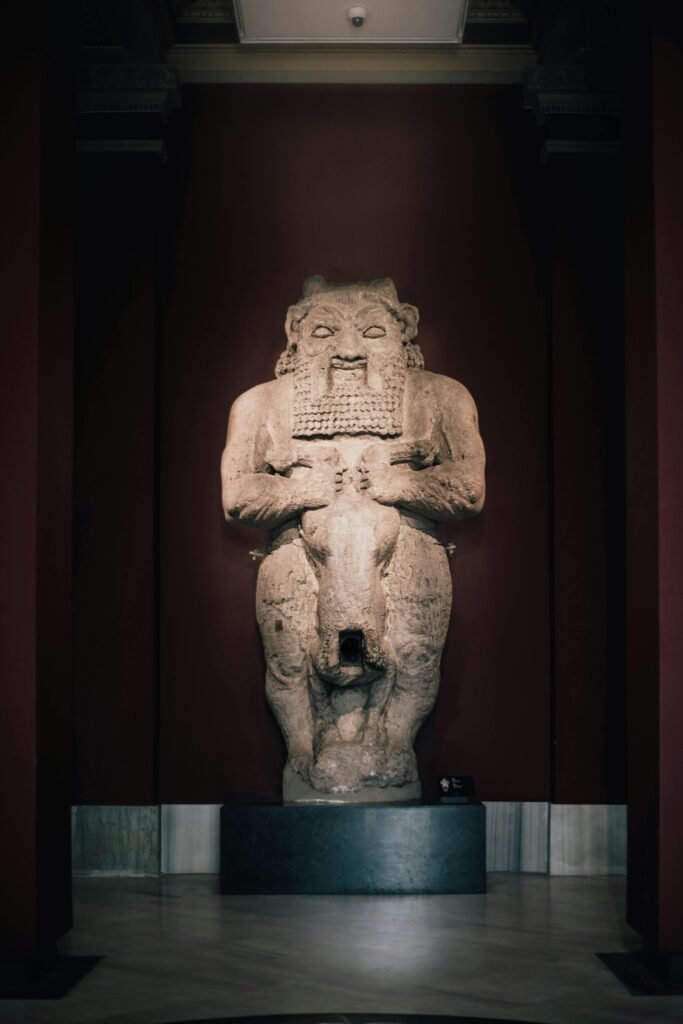
Independence movements
The 20th century saw a wave of independence movements in the Caribbean as colonies sought to assert their sovereignty and break free from the shackles of colonial rule.
Leaders and influential figures
During this period, many leaders and influential figures emerged who played instrumental roles in the fight for independence. Individuals like Sir Alexander Bustamante and Norman Manley in Jamaica, Eric Williams in Trinidad and Tobago, and Errol Barrow in Barbados led the charge for self-governance and worked tirelessly to mobilize their people.
Jamaica, Trinidad and Tobago, and Barbados
Jamaica, Trinidad and Tobago, and Barbados were among the first Caribbean countries to gain independence from colonial rule. Jamaica became independent in 1962, followed by Trinidad and Tobago in 1962 and Barbados in 1966. These nations set important precedents for the rest of the region, inspiring other countries to pursue their own independence.
Commonwealth and post-colonial challenges
Following independence, many Caribbean countries opted to join the Commonwealth, maintaining close ties with the former colonial power, such as the United Kingdom. However, post-colonial challenges, including economic instability, political corruption, and social inequality, necessitated a renewed focus on nation-building and the pursuit of sustainable development.
Tourism and economic development
In recent decades, the Caribbean region has experienced significant economic growth and development, largely fueled by the emergence of the tourism industry.
Emergence of tourism industry
The Caribbean’s natural beauty, pristine beaches, and vibrant culture have made it a popular tourist destination. Governments and private investors recognized the potential of tourism to drive economic growth and have invested heavily in infrastructure, hotels, and resorts to accommodate the influx of visitors. This has led to a boom in the tourism industry, creating jobs and generating substantial revenue for Caribbean countries.
Positive and negative impacts on Caribbean countries
While the tourism industry has brought many positive effects to the Caribbean, such as job creation and increased foreign exchange earnings, it has also presented challenges. Environmental degradation, cultural commodification, and income inequality are among the negative impacts associated with mass tourism. Caribbean countries must carefully balance the benefits and drawbacks of tourism to ensure sustainable and inclusive growth.
Diversification of economies
In recent years, Caribbean countries have recognized the need to diversify their economies beyond tourism. This has led to a focus on sectors such as agriculture, manufacturing, and services. Additionally, initiatives have been undertaken to promote entrepreneurship, innovation, and the development of niche markets, such as eco-tourism and medical tourism. By diversifying their economies, Caribbean countries aim to reduce dependence on a single industry and create a more robust and resilient economy.
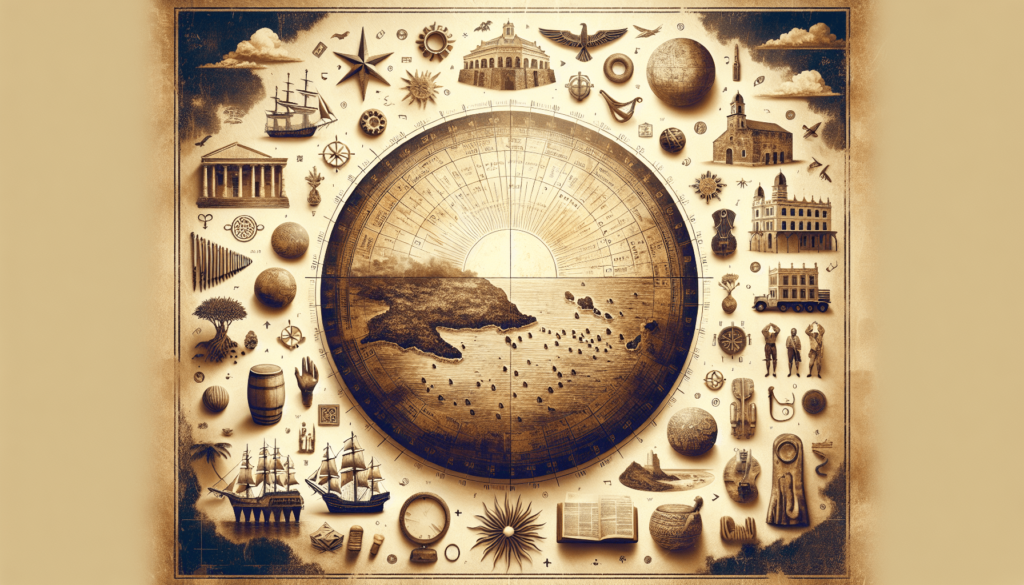
Cultural contributions
The Caribbean region has made significant contributions to the world in terms of its rich and diverse cultural heritage.
Music and dance
The Caribbean is often referred to as the birthplace of various music genres, including reggae, calypso, salsa, merengue, and zouk. These vibrant musical traditions have influenced artists from around the globe and have become synonymous with the region’s identity. Alongside music, traditional Caribbean dance forms, such as salsa, samba, and the Jamaican dancehall culture, have captivated audiences worldwide.
Cuisine
Caribbean cuisine is a delectable fusion of African, European, and Indigenous culinary traditions. The region’s food is known for its bold flavors, exotic spices, and use of tropical fruits and vegetables. Dishes like jerk chicken, curried goat, and ackee and saltfish have become iconic representations of Caribbean gastronomy. Caribbean restaurants and food festivals have gained popularity globally, allowing people to savor the flavors and experience the region’s rich culinary heritage.
Literature and poetry
Caribbean literature and poetry have produced some of the world’s most celebrated authors. Writers like Derek Walcott, V.S. Naipaul, Jean Rhys, and Jamaica Kincaid have gained international acclaim and have used their works to explore themes of colonialism, identity, and resilience. Their impactful writings have shed light on the Caribbean experience, capturing the struggles and triumphs of the region’s diverse peoples.
Visual arts
The Caribbean is home to a vibrant and diverse range of visual artists who express their creativity through various mediums. From vibrant paintings and sculptures to installation art and photography, Caribbean artists explore their cultural heritage, social issues, and personal narratives. Their artworks not only evoke emotions but also serve as a form of cultural preservation and expression.
Contemporary challenges
Despite the many achievements and successes, the Caribbean region still faces numerous challenges in the modern era.
Economic inequality
Economic inequality remains a pressing issue in the Caribbean, with significant disparities between rich and poor. The tourism industry, while contributing to economic growth, often fails to benefit all segments of society equally. Caribbean governments and international organizations are working together to address this issue and promote inclusive economic development.
Climate change and natural disasters
The Caribbean is particularly vulnerable to the effects of climate change, including rising sea levels, extreme weather events, and coastal erosion. Hurricanes, in particular, have devastated many Caribbean islands, causing loss of life and significant damage to infrastructure. Efforts are being made to reduce greenhouse gas emissions, enhance disaster preparedness and response, as well as promote sustainable development practices to mitigate the impact of climate change.
Crime and drug trafficking
Crime rates and drug trafficking continue to be significant challenges in the Caribbean. Factors such as socioeconomic inequalities, high levels of youth unemployment, and the illicit drug trade contribute to the persistence of criminal activities. Governments, civil society, and international organizations are working together to tackle these issues, focusing on crime prevention strategies, community development, and regional cooperation.
In conclusion, the history of the Caribbean is a complex tapestry of indigenous civilizations, European colonization, struggles for freedom and equality, and ongoing challenges. From the first indigenous inhabitants to the Windrush generation and beyond, the Caribbean has demonstrated resilience and resourcefulness in the face of adversity. The region’s rich cultural contributions, flourishing tourism industry, and ongoing efforts to address contemporary challenges shape its identity and pave the way for a brighter future.
